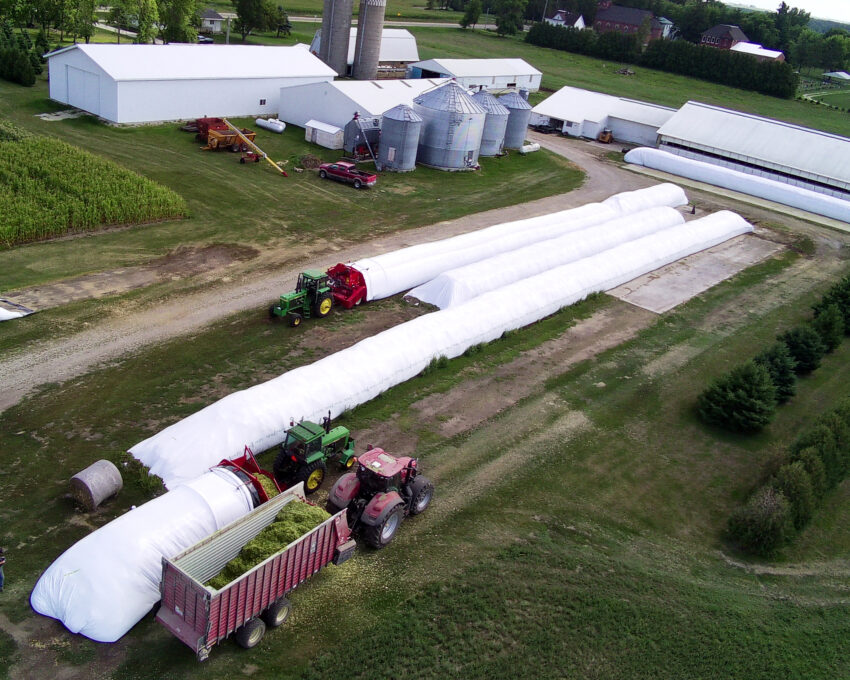For dairy farmers, “good feed promotes good production” is a guiding principle that has a direct cause-and-effect impact on milk tank volume. As a result, providing the highest quality feed is crucial and significantly affects a dairy’s bottom line, surpassing any other operational change in terms of expense.
“You can see an immediate increase in production with better feed,” says Kyle Rauls of Rauls Dairy in DeForest, WI. “If you get into a better feed, [the cows] start milking better within days. If the feed is moldy, some cows will go off the feed and drop weight on milk.”
Given the importance, experienced dairy farmers closely monitor milk production and herd health daily to assess the effectiveness of the feed and make any needed adjustments to the Total Mixed Ration (TMR) fed to dairy cows.
The process typically involves creating on-farm silage and mixing it in appropriate proportions into the TMR along with other additives. As a home-grown food source, silage is a cost-effective and sustainable way to provide dairy cattle with many of the nutrients and calories they need to stay healthy and productive.
Overcoming Silage Waste
One of the main obstacles in producing silage using conventional methods like piles, pits, and bunkers is the considerable risk of spoilage and loss, which can amount to as much as 30%.
The problem with these conventional methods is the excessive exposure to oxygen, which leads to rapid deterioration of silage. Proper packing of silage is crucial to effectively preserve it. Insufficient packing, which fails to minimize oxygen exposure, can result in spoilage of ensiled dry matter, and lead to feed loss.
With silage bagging, the oxygen is removed almost instantly, and fermentation begins promptly. The sealed bags protect silage quality and maintain favorable fermentation conditions even amid unfavorable conditions such as exposure to rain, moisture, excessive dryness, or prolonged storage.
The result is higher nutrient retention per acre, increased milk production, enhanced dairy cow health, reduced veterinary costs, and improved efficiency. Additionally, bagging enables better crop separation and the development of improved feed rations for cows.
Over the years, Rauls has honed his silage bagging process, gradually transitioning from limited capacity to higher capacity bagging equipment. Today, Rauls bags approximately 50,000 tons of silage annually using a heavy-duty side-loader designed for forage wagons. The high-capacity Versa ID900N bagger, powered by a tractor, can be used to bag up to 12-foot diameter bags that are 500 feet long.
As dairy farmers like Rauls have used silage bagging over the years, the equipment has continued to improve. To maximize the effectiveness of their equipment, dairy farmers should prioritize packing pressure as a key factor to consider for equipment selection, according to Rauls.
“You want to pack as much as you can airtight, so you don’t have spoilage. You don’t want air pockets in the bag because that is where you get mold,” says Rauls. “The Versa bagger packs it very well.”
With silage essential for dairy farms, the use of silage bagging is now becoming an industry best practice over traditional methods. Farmers who take advantage of this cost-effective, superior technology will promote the health and production of their dairy cows as well as the efficiency and profitability of their operation for many years to come.
For more information, call (800) 837-7288 or visit versacorporation.com.

